Mission
Adaptive neurotechnologies are systems that interact with the central nervous system (CNS) to induce and guide plasticity for therapeutic or scientific purposes. The goals of the National Center for Adaptive Neurotechnologies (NCAN) are to: (1) create new adaptive neurotechnologies, define their mechanisms, and translate them into new therapies that enhance recovery for people with neurological disorders; (2) disseminate these technologies for use everywhere; and (3) educate and train other scientists, engineers, and clinicians to create and use these technologies. NCAN’s work has produced unique conceptual insights that clarify these goals and novel technologies that achieve them. These advances underlie and drive NCAN’s current and future work.
NCAN is driven by recognition that the adult CNS is plastic. From cortex to spinal cord, it changes continually to support all the skills we acquire and maintain (Wolpaw and Kamesar, 2022, for review). When the CNS is damaged, therapies optimizing this plasticity could produce recovery far beyond that now possible. BCI2000 enabled us to produce the first animal and human evidence that a noninvasive therapy that targets beneficial plasticity to a crucial CNS site triggers wider plasticity that enhances recovery after spinal cord injury (Chen et al. 2006; Thompson et al. 2013). This work, guided by our science and achieved with our technology, exemplifies and presaged subsequent NCAN advances and current activities that are engaging CNS plasticity to address scientific questions and clinical problems. Our training and dissemination efforts are enabling other basic and clinical researchers to adopt and use these technologies and to participate in creating new methods and applications.
References
Chen, Y., Chen, X. Y., Jakeman, L. B., Chen, L., Stokes, B. T., and Wolpaw, J. R., (2006e). Operant conditioning of H-reflex can correct a locomotor abnormality after spinal cord injury in rats. The Journal of Neuroscience: The Official Journal of the Society for Neuroscience 26(48):12537–12543. ISSN 1529-2401. PMCID: PMC6674902.
Thompson, A. K., Pomerantz, F. R., and Wolpaw, J. R., (2013b). Operant Conditioning of a Spinal Reflex Can Improve Locomotion after Spinal Cord Injury in Humans. The Journal of Neuroscience 33(6):2365–2375. ISSN 0270-6474, 1529-2401. PMCID: PMC3579496.
Wolpaw, J. R. and Kamesar, A., (2022). Heksor: The central nervous system substrate of an adaptive behaviour. The Journal of Physiology 600(15):3423–3452. ISSN 1469-7793. PMCID: PMC9545119.

